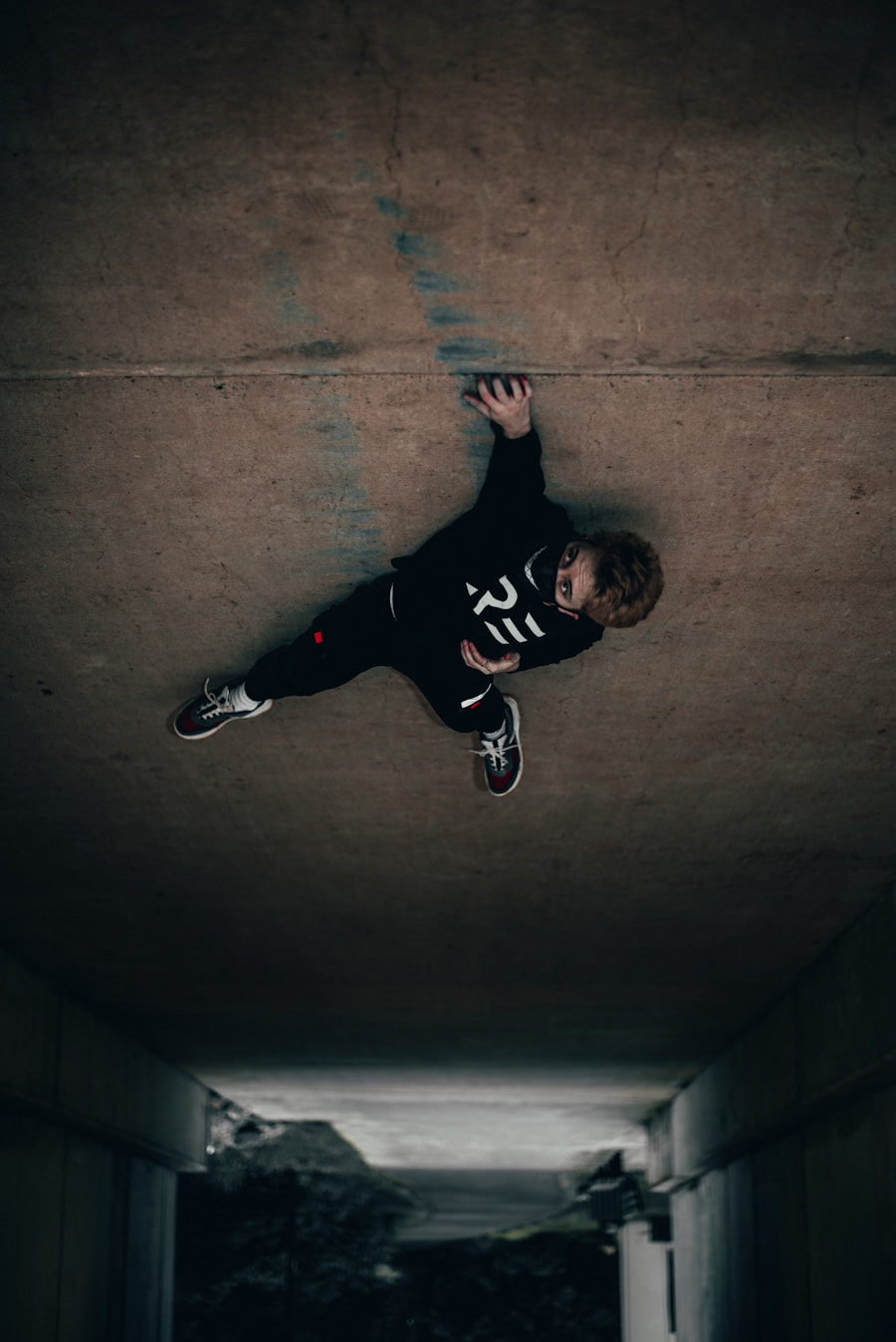Download links
How to install Mastering the Art of Parkour with taya773 APK?
1. Tap the downloaded Mastering the Art of Parkour with taya773 APK file.
2. Touch install.
3. Follow the steps on the screen.
Description
Parkour, often described as the art of movement, is a discipline that emphasizes fluidity, efficiency, and creativity in navigating obstacles. Originating in France in the late 20th century, parkour has evolved from a training method for military personnel into a global phenomenon embraced by individuals of all ages and backgrounds. At its core, parkour is about overcoming physical barriers in one’s environment, whether they be walls, railings, or urban landscapes.
Practitioners, known as traceurs (male) or traceuses (female), utilize their bodies to vault, climb, and leap through their surroundings, transforming everyday spaces into playgrounds. The philosophy behind parkour extends beyond mere physicality; it embodies a mindset of resilience and adaptability. Traceurs often view obstacles not as hindrances but as opportunities for growth and self-expression.
This perspective encourages individuals to push their limits, both physically and mentally. The practice fosters a sense of community among practitioners who share tips, techniques, and encouragement, creating an inclusive environment where everyone can learn and improve at their own pace. Understanding these foundational principles is essential for anyone looking to embark on their parkour journey.
Key Takeaways
- Parkour is a physical discipline that involves moving through urban environments using only the human body and the surroundings to propel oneself.
- Developing strength and agility through regular training and conditioning exercises is essential for mastering parkour movements.
- Learning parkour techniques such as vaults, jumps, and precision landings is crucial for navigating obstacles and performing fluid movements.
- Overcoming fear and mental barriers is a key aspect of parkour, as practitioners must learn to trust their abilities and push past their comfort zones.
- Safety tips for practicing parkour include warming up, using proper equipment, and always being aware of one’s surroundings to avoid accidents.
Developing Strength and Agility for Parkour
To excel in parkour, developing strength and agility is paramount. The discipline demands a unique combination of physical attributes, including explosive power, balance, and coordination. Strength training should focus on functional movements that mimic the actions performed in parkour.
Exercises such as squats, lunges, and push-ups are fundamental for building the necessary muscle groups. Additionally, incorporating plyometric exercises like box jumps and burpees can enhance explosive power, allowing practitioners to leap higher and land more effectively. Agility is equally crucial in parkour, as it enables traceurs to navigate obstacles with grace and precision.
Agility drills can include ladder drills, cone sprints, and agility hurdles that improve footwork and quickness. Practicing these movements not only enhances physical capabilities but also builds muscle memory, which is vital when executing complex maneuvers in dynamic environments. Furthermore, flexibility plays a significant role in preventing injuries and improving overall performance.
Learning Parkour Techniques and Movements

Once a solid foundation of strength and agility has been established, aspiring traceurs can begin to learn specific parkour techniques and movements. The fundamental skills include the roll, precision jump, vaults, and wall runs. The roll is essential for safely absorbing impact when landing from heights; it distributes the force across the body and minimizes the risk of injury.
Practicing this technique on soft surfaces before transitioning to harder ground is advisable for beginners. Precision jumps involve leaping from one point to another with accuracy, often landing on narrow surfaces like rails or ledges. This skill requires not only strength but also keen spatial awareness and control over one’s body.
Vaults are another critical component of parkour; they allow practitioners to clear obstacles efficiently. Common vaults include the speed vault, lazy vault, and kong vault, each with its own unique mechanics and applications. Wall runs enable traceurs to ascend vertical surfaces briefly, showcasing both strength and technique.
Mastering these movements takes time and practice; therefore, it is essential to approach learning with patience and persistence.
Overcoming Fear and Mental Barriers in Parkour
| Technique | Success Rate | Difficulty Level |
|---|---|---|
| Precision Jump | 80% | Intermediate |
| Wall Run | 70% | Advanced |
| Gap Jump | 60% | Intermediate |
| Underbar | 75% | Intermediate |
Fear is an inherent part of learning any new skill, especially one as physically demanding as parkour. Many practitioners encounter mental barriers that can hinder their progress. Overcoming these fears requires a combination of mental fortitude and strategic training approaches.
One effective method is visualization; by mentally rehearsing movements before attempting them physically, traceurs can build confidence in their abilities. This technique allows individuals to envision successful outcomes rather than focusing on potential failures. Gradual exposure to challenging obstacles can also help alleviate fear.
Starting with smaller jumps or lower heights allows practitioners to build confidence incrementally before tackling more daunting challenges. Additionally, practicing with a supportive community can provide encouragement and motivation. Sharing experiences with fellow traceurs can normalize feelings of fear and anxiety while fostering a sense of camaraderie that bolsters resilience.
Ultimately, embracing fear as a natural part of the learning process can empower individuals to push through their limitations.
Safety Tips for Practicing Parkour
Safety should always be a top priority when practicing parkour. While the discipline encourages exploration and creativity, it is essential to approach training with caution to minimize the risk of injury. One of the most critical safety tips is to always warm up before engaging in any physical activity.
A proper warm-up increases blood flow to the muscles and prepares the body for the demands of parkour training. Practitioners should also choose appropriate training environments that are conducive to safe practice. Soft surfaces such as grass or padded mats are ideal for beginners learning new techniques or attempting higher jumps.
It is advisable to avoid practicing on slippery or unstable surfaces that could lead to falls or injuries. Additionally, wearing suitable footwear can significantly impact performance; shoes with good grip and cushioning can enhance stability during landings. Another vital aspect of safety is understanding one’s limits.
While pushing boundaries is an integral part of parkour, attempting moves beyond one’s current skill level can lead to accidents. Practitioners should focus on mastering fundamental techniques before progressing to more advanced maneuvers. Regularly assessing personal progress and setting realistic goals can help maintain a safe training regimen while still encouraging growth.
Taking Parkour to the Next Level with Advanced Moves and Challenges

Once foundational skills have been mastered, many practitioners seek to elevate their parkour practice by incorporating advanced moves and challenges into their training routines. Advanced techniques often require a higher level of strength, agility, and mental focus. Moves such as the double kong vault or the cat leap demand precise timing and coordination; thus, they should be approached with care after sufficient practice of basic vaults.
In addition to mastering advanced techniques, setting personal challenges can significantly enhance one’s parkour journey. This could involve creating obstacle courses that test various skills or participating in local competitions that encourage friendly rivalry among practitioners. Engaging in these challenges not only fosters personal growth but also strengthens community ties within the parkour world.
Moreover, exploring different environments can provide fresh challenges for experienced traceurs. Urban landscapes offer unique opportunities for creativity in movement; however, natural settings such as parks or forests can also present exciting obstacles like trees or rocks that require different techniques. Embracing diverse environments encourages adaptability and innovation in movement while keeping training sessions engaging and dynamic.
As practitioners continue to develop their skills in parkour, they often find themselves not only improving physically but also gaining valuable life lessons in perseverance, creativity, and community engagement. The journey through parkour is as much about personal growth as it is about mastering physical techniques; each leap taken represents a step toward greater self-discovery and empowerment within the art of movement.
FAQs
What is parkour?
Parkour is a physical discipline that involves moving through an environment in a creative and efficient way, using only the human body and the surroundings to propel oneself.
Where did parkour originate?
Parkour originated in France, developed by David Belle and his group of friends in the late 1980s. It was inspired by military obstacle course training and the natural movement of animals.
What are the basic movements in parkour?
Basic movements in parkour include running, jumping, climbing, vaulting, and balancing. These movements are used to navigate obstacles and terrain in a fluid and efficient manner.
Is parkour dangerous?
Parkour can be dangerous if not practiced with proper training and safety precautions. It is important for practitioners to start with basic movements and gradually progress to more advanced techniques under the guidance of experienced instructors.
What are the benefits of practicing parkour?
Practicing parkour can improve strength, agility, coordination, and mental focus. It also promotes creativity, problem-solving skills, and a strong sense of community among practitioners.
Is parkour only for young and fit individuals?
Parkour can be practiced by people of all ages and fitness levels. It is important to start at a level that is appropriate for one’s abilities and progress at a pace that is comfortable and safe.





